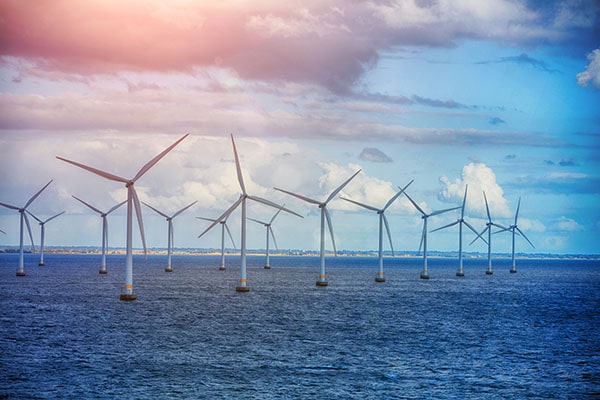Achieving a Just Transition:
Framework for Company Action
Key Activities
- Develop an emissions reduction plan and time-bound roadmap that is in line with Paris Accords.
- Measure, track, report, and publicly disclose carbon footprint, including scope 3 emissions.
- Work with suppliers across the value chain and other business partners to support their path to net zero.

See it in action
Repsol have defined a clear net-zero roadmap by 2050 with interim decarbonization goals focused on the reduction of the company’s carbon intensity indicator: 15% by 2025, 28% by 2030 and 55% by 2040.
Repsol is moving towards a model that integrates several technological options and combines renewable electricity with the use of low-carbon products to offer solutions that meet all of society’s energy needs at home or on the move. The new updated strategic plan contemplates investment of €6.5 billion on low-carbon business between 2021 and 2025, which is 35% of the total capex in the period (Repsol, 2021). Moving forward, a challenge will be to identify and apply new technologies, with the help of an appropriate regulatory framework, which will allow the company to achieve the Paris ambition of 1.5 degrees Celsius at the lowest cost to society.
These include facilitating a transition from transportation fuels to chemical building blocks integrated with sustainable downstream derivatives. In addition, the company plans to maximize the use of biofuels and bio-pathways to fix CO2 emissions and facilitate a conversion to renewable fuels and materials. Lastly, the company is scaling up recycling of materials, capturing, storing and converting CO2 to use chemicals and materials for competitive costs, and maximizing circularity across value chains.
In March 2020, ACEN announced board approval of its E&S Policy, incorporating sustainability in its business and organization.
A core focus of the policy is the company’s transition to a low carbon portfolio and divestment of its coal plants by 2030.
ACEN defined a long-term Portfolio mix roadmap with a 2025 interim target of reaching 5GW of renewables capacity accounting for at least 50% of energy output. In addition, this year, AC Energy started to look into developing a 2050 climate target.
Who's measuring these actions?
Disclosure Indicator 2 – Long-term (2036-2050) GHG reduction target(s)
- Sub-indicator 2.1:
The company has set a long-term target for reducing its GHG emissions in the period between 2036 and 2050. - Sub-indicator 2.2:
The long-term (2036 to 2050) GHG reduction target covers at least 95% of Scope 1 and 2 emissions and the most relevant Scope 3 emissions (where applicable). - Sub-indicator 2.3:
The company’s last disclosed carbon intensity OR its short-term or medium-term targeted carbon intensity OR the company’s expected carbon intensity derived from its long-term GHG reduction target is aligned with or below the relevant sector trajectory needed to achieve the Paris Agreement goal of limiting global temperature increase to 1.5°C with low or no overshoot in 2050.
Disclosure Indictor 3 – Long-term (2026-2035) GHG reduction target(s)
- Sub-indicator 3.1:
The company has set a medium-term target for reducing its GHG emissions in the period between 2027 and 2035. - Sub-indicator 3.2:
The company’s medium-term (2027 to 2035) GHG reduction target covers at least 95% of its Scope 1 and 2 emissions and the most relevant Scope 3 emissions (where applicable). - Sub-indicator 3.3:
The company’s last disclosed carbon intensity OR its short-term targeted carbon intensity target OR the company’s expected carbon intensity derived from its medium-term GHG reduction target is aligned with or below the relevant sector trajectory needed to achieve the Paris Agreement goal of limiting global temperature increase to 1.5°C with low or no overshoot in 2035. This is equivalent to IPCC’s Special Report on the 1.5° Celsius pathway P1 or the IEA’s Net Zero Emissions by 2050 Scenario. - Sub-indicator 3.4:
If the company has only set an intensity GHG reduction target, it has converted it into corresponding projected absolute GHG emissions reductions.
Disclosure Indictor 4 – Short-term (up to 2025) GHG reduction target(s)
- Sub-indicator 4.1:
The company has set a short-term target for reducing its GHG emissions in the period between 2023 and 2026. - Sub-indicator 4.2:
The company’s short-term (up to 2026) GHG reduction target covers at least 95% of its Scope 1 and 2 emissions and the most relevant Scope 3 emissions (where applicable). - Sub-indicator 4.3:
The company’s last disclosed carbon intensity OR the company’s expected carbon intensity derived from its short-term GHG reduction target is aligned with or below the trajectory for its respective sector to achieve the Paris Agreement goal of limiting global temperature increase to 1.5°C with low or no overshoot in 2026. This is equivalent to IPCC’s Special Report on the 1.5° Celsius pathway P1 or the IEA’s Net Zero Emissions by 2050 Scenario.
Disclosure Indicator 5 – Decarbonization Strategy
The company has a decarbonisation strategy that explains how it intends to meet its medium- and longterm GHG reduction targets.
- Metric 5.1.a: The company identifies the set of actions it intends to take to achieve its GHG reduction targets over the targeted timeframes. These actions clearly refer to the main sources of the company’s GHG emissions, including Scope 3 emissions (where applicable).
- Metric 5.1.b: The company quantifies the contribution of individual decarbonisation levers to achieving its medium- and long-term GHG reduction targets, including Scope 3 GHG reduction targets where applicable (e.g., changing technology or product mix, supply chain measures).
- Metric 5.1.c: If the company chooses to employ offsetting and negative emissions technologies to meet its medium- and long-term GHG reduction targets, it discloses the quantity of offsets, type of offsets, offset certification and the negative emissions technologies it is planning to use.
- Metric 5.1.d: The company discloses the abatement measures it intends to use that are technologically feasible under current economic conditions and quantifies the contribution of these measures to achieving its medium- and long-term GHG reduction targets.
Disclosure Indicator 11 – Historical GHG Emissions Reductions
- Sub-indicator 11.1: The company’s emissions intensity is decreasing.
- Sub-indicator 11.2: The company discloses the factors that have led to changes in its historical emissions trajectory.
More Blocks in this theme: Universal Net-Zero Energy
= Core Best Practice
= Just Energy Specific Practice
